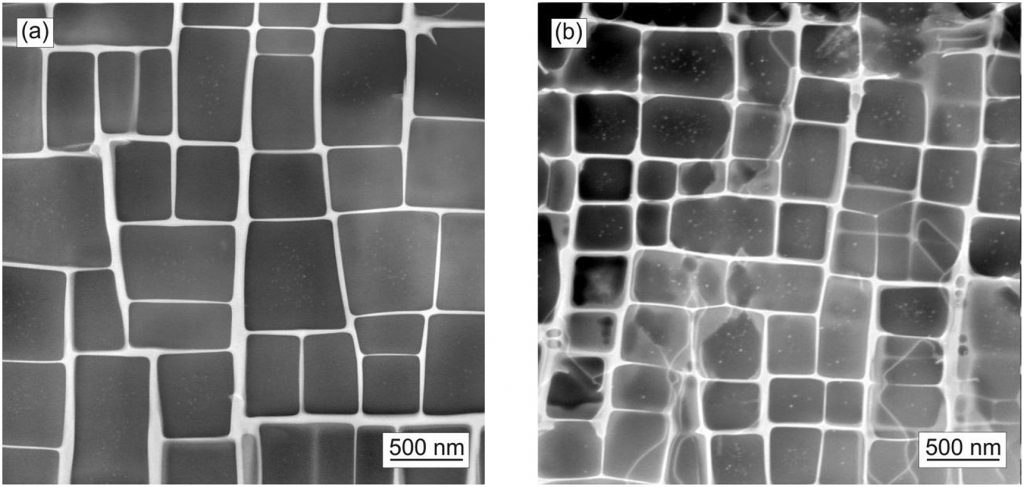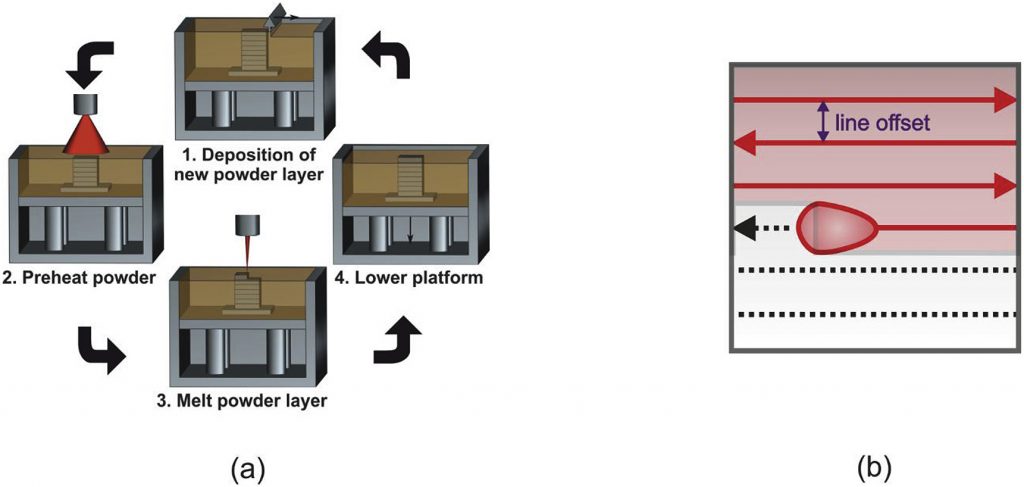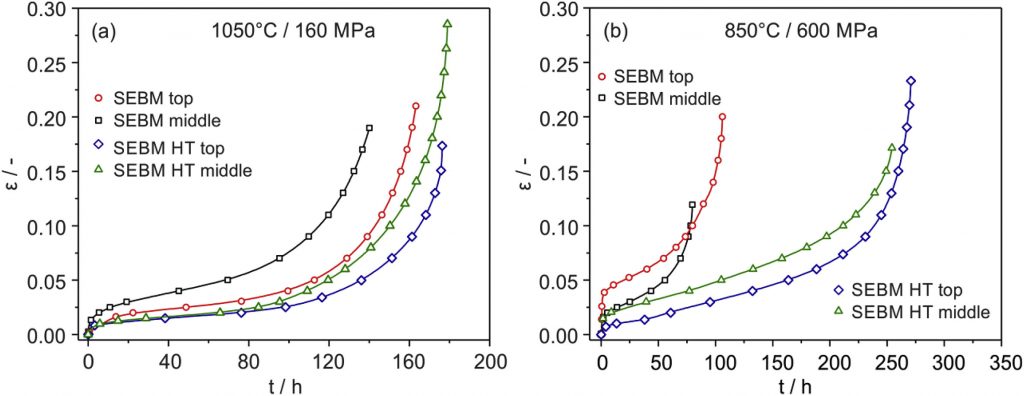German researchers explore creep properties in superalloys, detailing their findings in the recently published ‘Creep properties of single crystal Ni-base superalloys (SX): A comparison between conventionally cast and additive manufactured CMSX-4 materials.’ The authors compare both microstructures and the creep properties of two different types of single crystal Ni-base superalloys.
Single crystal Ni-base superalloys (SXs) are extremely relevant to applications today like aerospace, energy, and more; for example, these metals can be used to create turbine blades—but they must be able to handle mechanical loads in extreme temperatures, over 1000 °C—and operate within the creep regime. CMSX-4 materials possess what the researchers refer to as good creep strength because they are composed of refractory elements (W, Ta, Re).

TEM micrographs of γ/γ′-microstructure taken from the materials investigated in the present work. (a) Fully heat treated cast SX. (b) Heat treated SEBM SX material. The particles were identified as L12-particles using selected area electron diffraction (SAED).
These materials are not a new subject of study for researchers by any means, but here the authors want to know whether creep properties change during processing, specifically when using additive manufacturing. SEBM was chosen as the mode of production due to its ability to produce Ni-base superalloys as single crystals.
“SEBM represents a powder bed additive manufacturing technique, which is characterized by high solidification rates and high thermal gradients,” state the researchers. “Therefore, the scale of segregation and the primary dendrite arm spacing can be two orders of magnitude smaller as compared to Bridgman processed materials.”

Schematic illustration of SEBM SX processing. (a) SEBM processing steps. (b) Cross snake hatching SEBM melt strategy.
They used the following miniature creep evaluation tests:
- High temperature/low stress (1050 °C, 160 MPa)
- Low temperature/high stress (850 °C, 600 MPa)
Results were examined through scanning and transmission electron microscopy (SEM and TEM). The team noted a ‘small outer polycrystalline rim of about 1 mm thickness with very fine grains’ in both cross sections. In the high temperature/low stress regime, all three material states exhibited similar behavior; however, the low temperature/high stress regimes showed ‘significant’ differences in creep behavior when comparing the three material states.
“In case of the as-built material states, the specimen which was taken from the top of the SEBM bar (red circles) shows higher rupture strains and slightly longer rupture lives than the specimen which was taken from middle of the bar (black squares),” stated the researchers. “After the multiple step heat treatment, the specimens which were taken from the middle of the bar (green triangles) accumulate creep strain faster and fail a little earlier than those which were taken from the top of the heat treated SEBM bar (blue diamonds).”

Creep behavior of as-built and heat treated SEBM creep specimens which were taken from different bar positions. (a) Creep data from the high temperature low stress creep regime (1050 °C, 160 MPa). (b) Creep data from the low temperature and high stress creep regime (850 °C, 600 MPa). For details see text.
“Bar regions which formed earlier exhibit larger γ′-particles and wider γ-channels. As a consequence, they deform faster. This effect can even be detected after a homogenization and precipitation heat treatment. Further research is required to find out why heat treatments do not extinguish this effect,” concluded the researchers.
3D printing with metal is becoming increasingly critical to aerospace applications, and impressively so as organizations like NASA produce special alloys for 3D printing rocket parts, engine igniters, and nozzles. What do you think of this news? Let us know your thoughts! Join the discussion of this and other 3D printing topics at 3DPrintBoard.com.

Two quadratic cross section SEBM bars with single crystal cores. From the bar in front miniature creep specimens were machined using electron discharge machining (EDM). The SEBM build direction of the two bars is from the right to the left.
Subscribe to Our Email Newsletter
Stay up-to-date on all the latest news from the 3D printing industry and receive information and offers from third party vendors.
You May Also Like
APWORKS Expands Scalmalloy 3D Printing with Farsoon and CNPC Partnerships
In the lead up to Formnext 2024, Airbus subsidiary APWORKS has teamed up with Farsoon Technologies and CNPC Powder to expand the production and application of Scalmalloy, APWORKS’ high-strength, corrosion-resistant...
3D Printer OEM Axtra3D Raises Nearly $10M in Series A
Axtra3D, an original equipment manufacturer (OEM) of 3D printers leveraging the company’s patented Hybrid Photosynthesis (HPS) technology, has received another $4.5 million in Series A financing, bringing its total Series...
Caracol AM to Launch its First Metal 3D Printer at Formnext 2024
Caracol AM, a US-Italian original equipment manufacturer (OEM) of large-format additive manufacturing (AM) systems, has announced the launch of the company’s first metal printer, Vipra AM. A directed energy deposition...
ADDIMETAL to Debut First French Metal Binder Jetting 3D Printer at Formnext 2024
ADDIMETAL, a French original equipment manufacturer (OEM) of additive manufacturing (AM) hardware, will debut its first product, the K2-2 metal binder jetting (MBJ) printer, at Formnext 2024 in Frankfurt, Germany...






































